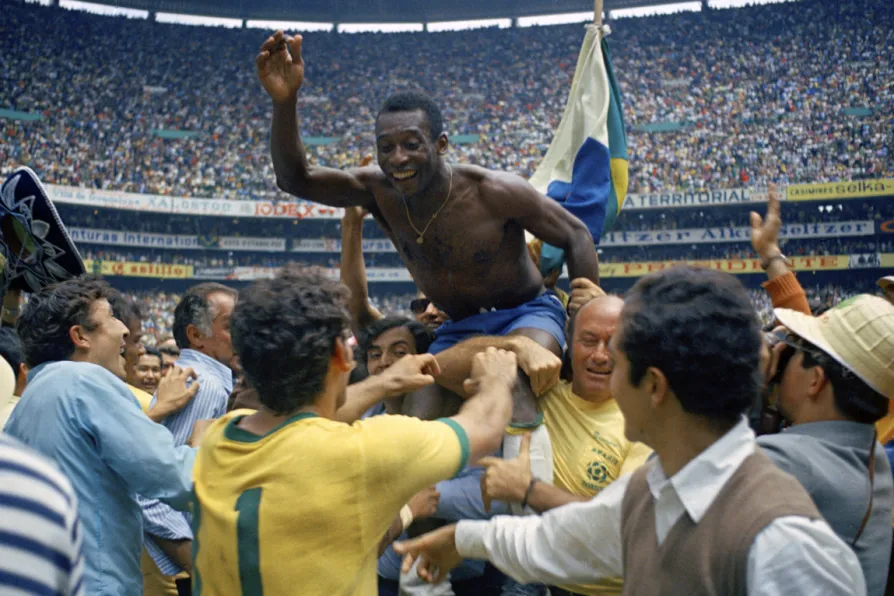
 Pele is hoisted on the shoulders of his teammates after Brazil defeated Italy 4-1 at the World Cup final, in Mexico City, 1970
Pele is hoisted on the shoulders of his teammates after Brazil defeated Italy 4-1 at the World Cup final, in Mexico City, 1970
PELE was football’s first global superstar. Great players and star players may have come before him, but none had reached such levels of lore.
Stories of his talent were spread by word of mouth before TV and moving pictures emerged to confirm these unbelievable reports as true.
The timing of his emergence combined with his mastery of the game means there will never be another player like him.
The fact Pele was able to become such a global star while playing the entirety of his club football career in the Americas, mostly for Santos in Brazil, demonstrates how his imaginative and unmistakable way of playing football flourished across a decade when media was becoming more global.
Given the veneration of Pele as a global football icon and celebrity, it is sometimes easy to forget Pele the footballer.
During his time with Santos and Brazil, Pele was already performing skills and moves that would later become synonymous with other players.
The ever-increasing number of attacking roles on a football pitch that emerged during Pele’s career and after had already been played in a fashion by the man himself, or at least by one of his teammates in one of those world-class Santos and Brazil sides.
He came to the fore for the Brazil national team as part of their 1958 World Cup winning side in Sweden.
It was the first great Brazil team and arguably the greatest. New versions can sometimes diminish the achievements of older iterations, but echoes of this team are still seen in the way teams play to this day.
In 1958 Pele operated in a role that would be considered somewhere between a second striker and a number ten, alongside or behind the centre forward, in this case, Vava of Vasco da Gama.
Vava scored his first goals of that tournament in the third group game against the USSR. It was a game that also witnessed the first appearances for Garrincha and Pele at a World Cup.

Morning Star international editor ROGER McKENZIE reminisces on how he became an Aston Villa fan, and writes about the evolution of the historic club over the years













